What skills have you developed through this module and how effectively do you think you have applied them?
A skill that i have developed through this module is the applying knowledge from all areas of the arts to graphic design. From going to the lectures and learning all different aspects from various people i then had to use what i learnt and find graphic designers for a task. Some where harder than others but i found myself using the knowledge of what i no and finding parts of graphics that i didn't no about such as graphic design in movies. I've effectively applied my knowledge to my practice by looking at different arts when researching for briefs and this has aided me to think differently and see different approaches to an idea.
What approaches to methods of design production have you developed and how have they informed your design development process?
For my publication i had to consider different methods of production such as book binding, embossing and foiling. This informed my design development process as i was considering timing and the actual layout and function of the publication. This was one brief i defiantly had the opportunity to try different methods of production that i'd wanted to try and would be very appropriate to the content and format. However, unfortunately due to restrictions i wasn't able to do what i desired however i do feel that it has inform my design development and aided my publication in the direction it went into.
What strengths can you identify in your work and how have/will you capitalise on these?
One strength within this module that i have found in my work is time management and a clear process in designing. I started right at the beginning with researching deeply into the area that i had chosen to go with which i had broken down from a session with Jo. The research then lead from one another from researching design to aspects of design, principles, rules, quotes for design following onto typographic posters using inspirational quotes. Once i had a variety of research i then started to consider the content i would use from this for my publication, researching appropriate parts i wanted to include. From having my content i could design my layouts how i wanted knowing what would be on each page, this created a good structure for my design as when i was ready to go digital i knew exactly how i wanted it and where it was meant to go. I feel i capitalised on this clear process in the crits as i knew exactly where i was at, what i was doing and how i wanted it to be and this came through in the feedback i got. It meant i could capitalise on time overall as i had the basis sorted and needed to just digitalise and print once ready.
What weaknesses can you identify in your and work and how will you address these in the future?
One weakness i can identify in i work is the academia aspect. I'm not very good at structuring sentences, using a wide range of vocabulary which includes an academic level of words and my ability to write down exactly what i'm trying to communicate. Particularly in this module i have struggled to fulfil the briefs to a high standard where i can talk about work or eras of art and design in an intelligent way. Although i feel the understanding is sometimes there my communication in writing doesn't show this. I hope to address this issues by getting help from the dyslexia support team here as i have just been diagnosed with dyslexia. I want to improve my vocabulary and writing skills to improve my work in the context of practice module.
Identify 5 things that you will do differently next time and what do you expect to gain from these?
1. Plan out my essay first
I hope to gain from this as my essay will flow and show a structured and academic argument towards the question.
2. Have better notes from my lectures so when i revisit them they are easier to understand
3. Come prepared to every crit to the stage where i should be within the brief to get the best out of it.
4. Look back at previous sessions with Jo to remind myself of certain aspects such as audience therefore when i am doing a brief i have these in mind when designing.
5. Ask for help with the academic writing so that i can have a better go at communicating my ideas.
Attendance - 4
Punctuality - 4
Motivation - 3
Commitment - 3
Quantity or work produced - 4
Quality of work produced - 3
Contribution to the group - 4
Tuesday 22 May 2012
Monday 21 May 2012
CoP: Essay Final
'Advertising
doesn't sell things; all advertising does is change the way people think or
feel' (Jeremy Bullmore) Evaluate this statement with reference to selected
critical theories (past and present)
"In our urban world, on the streets that
we walk, the buses that we take, in the magazines that we read, on walls, on
screens, we are surrounded by images of an alternative way of life. We may
remember or forget theses images, but briefly we take them in and they
stimulate our imagination either by way of memory or anticipation - where is
this other way of life?"
‘Ways of Seeing’, 1972 (‘Ways of
Seeing-Advertising ¼ www.youtube.com) reviewed how advertising glamorised
products suggested to our consumerist society that we could improve our lives
or ourselves by buying more and proposing our life experience can be enriched
through this even though in practical terms we are made poorer. The images
created in these advertisements are supposed to represent and are directed at
our lives and us, but in fact represent something quite distant from reality
and in fact establish a romanticized fantasy upon our subconscious. John Berger
is quite accurate in saying:
“Glamour is for everybody who believes they
can be glamorous, or, perhaps, more accurately, everybody who finds that they
cannot afford not to be glamorous.”
as we are now more than ever manipulated by
society’s norms and values where social envy is created and we become fearful
of rejection by the world. Advertising strives from this as “Without
social envy, glamour cannot exist.” (John Berger) and glamour is what
sells us into a lifestyle that becomes our obsession as it encourages our
imagination to think that this fantasy could be possible.” Therefore Jeremy
Bullmore would be correct in saying that advertising does change the way people
think or feel. However, consideration must be made for what the full intention
of this is in advertising, ie. the intention to sell things. By analysing his
statement, using past advertisements and critical theories, this essay will
demonstrate how society and advertising go hand in hand to manipulate and
seduce the public into buying, thinking and feeling differently.
In favour of Jeremy Bullmore's statement,
advertising encourages emotions within us and alters the way we think or
feel. ‘‘Persuasion in Advertising’ (J. O’Shaughnessy & N.J.
O’Shaughnessy, 2004, p.27) states:
"Emotion is a factor in persuasive
advertising that aims to change viewpoints and not simply to demonstrate the
logical implications of data. In the grip of an emotion, a person not only
feels differently, but also tends to think differently. Advertising that
resonates emotionally stands more chance of inducing a change in beliefs and
values/motives/wants/desires than one based on logic alone.”
By using emotion with the intention of
altering an individual’s beliefs and values, advertising taps into the human
consciousness changing how a person thinks or feels with that sole purpose in
mind. Advertisers use these techniques of manipulation to create a fantasy
world for the audience that leaves the subject craving that product due to
society’s already established structure of shared feelings and beliefs. The
purpose of doing this is that within the fantasy the product itself makes life
what it is (i.e. glamorous, sexy, intellectual, macho etc.) therefore selling
the product through a lifestyle by personifying it. Bullmore’s view would
be correct about advertising having a strong focus in altering the feelings and
thinking of it’s audience but in suggesting that is all it does, is, I believe,
wrong. Berger's 'Ways of Seeing' makes the connection between altering human
emotions and selling by pointing out the glamorisation of products and goods
that then suggest a social fantasy full of desires and hopes. The potential for
advertising to arouse emotions within us is strong as suggested in
"Persuasion in Advertising":
“Anything that concerns us has the potential
to arouse our emotions and, as Margalit says, emotions engage us with their
objects in such a way as to make them loose their neutrality: they become
marked by being lovable, disgusting, exciting, fearful and so on.”(J.
O’Shaughnessy & N.J. O’Shaughnessy, 2004, p.27)
The Chanel marketing team provide an excellent
example of personifying a product and using the tool of arousing emotion, in
particular for their Chanel No.5 advertising campaign. A complete story of
love, romance and the heart of a young woman are employed to sell high end,
expensive perfume. One of their most famous, most expensive and elaborate
advertisements, with a budget of $42 million and the renowned Baz Luhrmann
directing, is a perfect illustration of how advertisers represent an abstract
object by incorporating it into an unrealistic fantasy of emotion and just how
far the advertising industry will go to reach their market (nicole kidman
chanel commercial, www.youtube.com). Featuring famous actress
Nicole Kidman in what is considered to be a film trailer and of course the
excessive product placement of Chanel No.5’s equally famous logo, this
sophisticated TV advertisement challenges the fragrance market and offers their
product as a chance to escape the mundane for a lavish and exciting life that
holds the promise of love and extravagant romance. More importantly it offers
an achievable, aspirational way of life, which to the modern woman, weighed
down by a stressful career, a family and trying to sustain society’s idealistic
view of a successful woman, that she hopes for and the product becomes a
marker in her perception of herself of all that she yearns to be. It
comes as a relief to her to find that a small part of her ‘dream’ self can be
realized by the purchase and use of this product, she has bought into the
fantasy. Realistically it will cost her financially, she will own a
bottle of fragranced water, taking some pleasure in the ownership and use of
it, but the important areas of her life will remain unchanged. However
the advertisers have achieved what they intended, They have tapped into
feelings of human desire and aspiration, altering the thinking of their
audience by convincing them that in owning this designer branded product they
have exceeded in life and reached the top of society’s ladder. They continue
using this idealistic method of branding (see CHANEL NO.5 COMMERCIAL AVEC/WITH AUDREY TAUTOU /
DIRECTED BY JEAN PIERRE JEUNET, www.youtube.com) which features another alluring young woman, this time Audrey
Tautou a French actress. Her personal charisma already hints at romance
coupled with her incredible beauty while being set alongside the French
city of Paris, the package is already irresistible. All of this is
further complimented by the song 'I’m a fool to want you' by Billie Holiday
playing behind the magic and romance of a night train journey. The story
revolves around the mesmerising effect of the scent left in the woman's wake on
a man, who could only be described as typically and unnaturally attractive.
This seductive presentation instigates and builds towards the inevitable
manipulation of the audience’s emotions towards a desired life and the product
that gets them there. This is a perfect example of Berger's urban world where
we are taken in by our imagination yet where is this way of life, the night
train, and the man? (To the target audience, it’s in the bottle of Chanel
No 5.)
Jeremy Bullmore in his
2003 edition of 'Behind the Scenes in Advertising Mark III' (P.14) states:
"The truth of the
matter is that people enjoy being persuaded being courted, being wooed, being
wanted." and he'd be correct in saying this as its clear that this
commercial is intended to influence and the audience know they are being
targeted by the industry yet they allow themselves to be manipulated and buy
into the advertiser’s fantasy for them. Through publicity they appeal to a way
of life we aspire to but have not yet achieved suggesting that if we buy, our
life will have taken a step towards our dream and be different. Our home
and relationships will become luminous due to our new possessions. Playing upon
fear and the rules of the dream, those who don't have the power and lack
glamour, become faceless and using techniques such as the 'weasel claim' and
'unfinished claim' advertisements offer a promise while at the same time
threatening undesirability and invisibility without their product. John Berger
sums this up in his documentary 'Ways of Seeing':
"It suggests you
are inadequate as you are but consoles you with a promise of a dream."
This is probably one of
the most important factors in advertising from the aspect of altering the
feelings and thinking of an audience in a direction best suited to the
industry. It would appear clear that although Jeremy Bullmore says that advertising
only changes the way people think or feel, it does in fact intend to do this
with the sole purpose of selling, this method being a device used, along with
many, to influence and control society as a whole encouraging what’s already
been embedded in our nature.
In opposition to
Bullmore's theory of advertising not selling we see in the DeBeers 1948
advertising campaign, ’A diamond is forever’ (A Diamond is Forever TV
commercial "Theatre"(2001), www.youtube.com) a clear intention
of using manipulation of emotions in order to sell a product. Due to the
diamond decreasing in price and their efforts to revive the industry through
advertising, even to this day, 64 years on, a diamond is forever in our mind as
a symbol of love, attached to various important human milestones such as
engagement, birthday and anniversary. Through a series of clever advertising we
have been seduced by the portrayed imagery of wealth, success and rarity held
in a diamond and then emotionally manipulated into conforming with that
portrayal to celebrate our love by the expensive indulgence of such item.
Combined with the threat of feeling inadequate and rejected from main society
or even abandoned by our ‘love’ for not showing enough love if
non-conforming to the depicted ideal. Over the years by using the base of
couples and occasions, DeBeers have ensured diamonds as a global luxury, a
stage in life of utter happiness as well as success and most importantly a
promise we now expect. This marketing initially made necessary by the
declining price of diamonds and the powerful desire to reverse that decline
with an advertising campaign, has led to a result which was un thought of in
it’s original conception. DeBeers themselves summed up their accomplishment in
a successful statement from their history:
“The diamond became an
integral part of the modern-day ceremony of love, engagement and the
celebration of enduring relationships. Through De Beers the diamond has come to
speak a universal language, conveying its message of love, rarity and desire.”
(http://www.debeers.com/culture/current-news-and-events/9108230c-8a7f-4c43-bad6-b7699374c534/a-diamond-is-forever)
This phenomenal success
stems from an advertising campaign that created the association of diamonds
with romance and established a link between diamonds and the sacred tradition
of a religious wedding through manipulation of image in order to increase sales.
By simply capturing images of life-changing events and the emotional responses
to those events in their campaigns, we have succumbed to this image and
subsequently the diamond industry is now worth millions. Jeremy Bullmore
statement is far from realising the full potential and intentions of
advertising to sell products or goods by changing peoples thinking and feeling
and the DeBeers campaign is a successful and vividly accurate example of
showing how the two can together can impose a deep impact upon society.
In conclusion to the
theory “Advertising doesn’t sell things; all advertising does is change the way
people think or feel” (Jeremy Bullmore) it has to be said that advertising
doesn’t just sell things and doesn’t just change the way people think or feel
but the two go hand in hand. In part and in agreement with Jeremy Bullmore,
that over time, the manipulation of feelings and thinking is becoming more
prominent as the market becomes increasingly competitive and there is a need to
fight for a market share and advertisements more vigorously target our
innermost desires and hopes. Although not everyone is susceptible to
manipulation, in reality everyone has values and beliefs, whether based on
society’s values and norms or of their own basis, and “Whenever something
strongly resonates with values, its produces an emotional reaction.” (J.
O’Shaughnessy & N.J. O’Shaughnessy, 2004, p.64). With emotion comes the
opportunity to change feelings and thinking, therefore comes the potential to
extract the desired response by persuasion. Persuasion is the inherent
power within a sale. It has been evidenced that advertising isn't one or
the other as viewed in Bullmores statement and on reflection, from looking at
different theories, the advertising industry makes use of our innate human
vulnerability to do their job, to advertise and to sell products.
Bibliography:
Videos -
John Berger (1972) 'Ways of seeing - Advertising', Parts
1-4, BBC (www.youtube.com)
Available
from:
<http://www.youtube.com/watch?v=mmgGT3th_oI>
<http://www.youtube.com/watch?v=6q0JvXiZw7o>
<http://www.youtube.com/watch?v=zbebPdXv70w>
<http://www.youtube.com/watch?v=tAJovNjXMTs>
Chanel No.5 advertisement (2004) 'nicole
kidman chanel commercial' (www.youtube.com)
Available from:
<http://www.youtube.com/watch?v=yTO4FHf8MBs>
Chanel No.5 advertisement (2009) 'CHANEL NO.5 COMMERCIAL
AVEC/WITH AUDREY TAUTOU / DIRECTED BY JEAN PIERRE JEUNET'
Available from:
<http://www.youtube.com/watch?v=bVmuOhoFn3U>
DeBeers advertisement (1948) 'A Diamond is Forever TV
commercial "Theatre" (2001)', (www.youtube.com)
Available from:
<http://www.youtube.com/watch?v=qAxeVj-YwAA&feature=results_video&playnext=1&list=PLF9E2695049A5FD68>
Books -
J.O'Shaughnessy & N.J. O'Shaughnessy (2004)
'Persuasion in Advertising', Philadelphia , Psychology Press
J.Bullmore (2003) 'Behind the Scenes in Advertising Mark
III', United Kingdom ,World Advertising Research Centre
S. Jhally (1990) 'Codes of Advertising', Routledge, New
York
Internet -
DeBeers, Current News and Events (2011) 'The most
Iconic Slogan - A diamond is forever'
Available from:
<http://www.debeers.com/culture/current-news-and-events/9108230c-8a7f-4c43-bad6-b7699374c534/a-diamond-is-forever>
Funnycommercialsworld (2005) 'Chanel No.5 Commercial:
The Film (Nicole Kidman)'
Available from:
<http://www.funnycommercialsworld.com/chanel-no5-commercial-the-film-nicole-kidman-387.html>
CNBC 'Top Ad Campaigns of the 20th Century'
Available from:
<http://www.cnbc.com/id/43673665/Top_Ad_Campaigns_of_the_20th_Century>Available
from:
CoP: Lecture - Media Specificity
What is media specificity?
An artwork, in order to be successful, needs to adhere to the specific stylistic properties of its own medium.
“Gotthold Ephraim Lessing 1776
Medium/media specificity is a term used in aesthetics and art criticism.
It is most closely associated with modernism, but it predates it. According to Clement Greenberg,, medium specificity holds that "the unique and proper area of competence" for a form of art corresponds with the ability of an artist to manipulate those features that are "unique to the nature" of a particular medium.
Medium specificity and media specific analysis are ways to identify new media art forms, such as Internet art.
Medium specificity can be used as an aesthetic judgement tool, it can be used to frame the question, “ Does this work fulfil the promise contained in the medium used to bring the artwork into existence?”
We now move from descriptions of the properties of specific medium to prescriptions for what the aesthetics of these media should look like.
Pre-modernist idea: 'truth to materials'
In order for a medium to have characteristic qualities it must be grounded in a tradition that has established these qualities as intrinsic properties.
THE MESSAGE IS IN THE MEDIUM
An artwork, in order to be successful, needs to adhere to the specific stylistic properties of its own medium.
“Gotthold Ephraim Lessing 1776
Medium/media specificity is a term used in aesthetics and art criticism.
It is most closely associated with modernism, but it predates it. According to Clement Greenberg,, medium specificity holds that "the unique and proper area of competence" for a form of art corresponds with the ability of an artist to manipulate those features that are "unique to the nature" of a particular medium.
Medium specificity and media specific analysis are ways to identify new media art forms, such as Internet art.
Medium specificity can be used as an aesthetic judgement tool, it can be used to frame the question, “ Does this work fulfil the promise contained in the medium used to bring the artwork into existence?”
We now move from descriptions of the properties of specific medium to prescriptions for what the aesthetics of these media should look like.
Pre-modernist idea: 'truth to materials'
In order for a medium to have characteristic qualities it must be grounded in a tradition that has established these qualities as intrinsic properties.
THE MESSAGE IS IN THE MEDIUM
“Information pours upon us, instantaneously and continuously. As soon as
information is acquired, it is very rapidly replaced by still newer information. Our electronically configured world has forced us to move from the habit of data classification to the mode of pattern recognition.” MM
information is acquired, it is very rapidly replaced by still newer information. Our electronically configured world has forced us to move from the habit of data classification to the mode of pattern recognition.” MM
Technology as Memory extensions
-
Footprints
-
Drawing, painting and symbol making
-
Writing
-
Printing
-
Photography
-
Sound recording
-
Silent Film
-
Technological convergence of Sound recording and Silent Film
-
TV
-
Computers (1940s)
-
Magnetic tape (Available to the public from 1940s)
-
Video tape (Available to the public from 1969)
-
Audio-cassettes replace reel-to-reel tape, video-cassettes replace home movies.
CoP: Lecture - Film Theory 3
“A forkful of westerns: industry, audiences and the Italian western,” Christopher Wagstaff
- prima visione and seconda visione – cinemas that attracted a middle class sophisticated audience usually in major cities, audience selected a film to watch
• terza visione – less populated areas, cheaper tickets, audience went to cinema based on habit rather than selecting a film. Films were more
formulaic and popular films
The good the bad and the ugly
Sergio Leone 1966
Use of sound
• Use of Music
• Lack of dialogue
• Use of eye line and cutting
• Differences in scale
• Use of camera to tell a story • Fragmentation of body
• Catholic references
Literally meaning “yellow”, the term giallo here references the cover design of pulp fiction novels first produced by Italian publishing house Mondadori in the late 1920s. Initially, these were mostly translations of crime/mystery stories by writers like Agatha Christie and Edgar Wallace, but it wasn’t long before home-grown literary gialli began to appear. Director Mario Bava is widely recognised as the father of the genre’s cinematic incarnation and Koven offers both Bava’s La ragazza che sapev troppo (The Girl Who Knew Too Much, 1962) andSei donne per l’assassino (Blood and Black Lace, 1964) as texts which establish and fix in place the textual conventions of the genre. Koven looks at a wide range of giallo films by more than 25 directors, but he points out in his introduction that the book’s interest does not lie in an auteurist study of this body of work. Rather, his book is an exploration of the giallo from a synchronic perspective with particular attention given to some of the thematic concerns which arise from textual study of these films.
The giallo’s defining themes and motifs are cited with regularity in dedicated exploitation cinema fanzines and journals, and the existence of these critical collecting communities might be held responsible for sustaining interest in these great films long enough for academia to catch up. Nigel Burrell and Paul Brown’s 2005 Giallo Scrapbook magazine introduces the uninitiated with a kind of list: to qualify as a giallo, a film must have at its centre a deranged and perverse character whose killings are both inventive and peculiar; there is some past, primal scene which fuels the psychosis; he/she is dressed to kill – black trench coat and sometimes a black hat, but nearly always black leather gloves; weapons are sharp, the victims are hot and the blood flows, splatters and sprays like you’ve never seen (2). But not always; as La Dolce Morte concedes, this formula is consistently derailed by gialli which do not conform to these parameters.
http://sensesofcinema.com/2007/book-reviews/la-dolce-morte/
Giallo Killers
• Black Gloves
• Black Hat
• Black over coat
• Disguises gender
• Priests often used as part of gender confusion
• Black Gloves
• Black Hat
• Black over coat
• Disguises gender
• Priests often used as part of gender confusion
CoP: Lecture - Film Theory 2
French New Wave: the “look”
-
Shot on Location.
-
Used lightweight, hand-held cameras.
-
Lightweight sound & lighting equipment.
-
Faster film stocks, less light.
-
Films shot quickly and cheaply.
-
Encouraged:
-
– experimentation
-
– improvisation.
-
– experimentation
-
Casual, natural look;
-
Available light;
-
Available sound;
-
Mise-en-scene – French landscape, cafés;
-
Mobile camera – improvised & innovative.
1940 - 1944: The Occupation
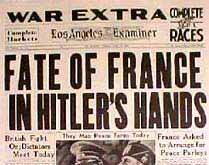 Paris during the Second World War was a dark city. The blackout imposed by the occupying German forces meant that lights had to be turned off, a shortage of petrol kept cars off the road, while a curfew kept most people off the streets at night. During the day, numerous regulations, censorship and propaganda, made the occupation increasingly unbearable.
Paris during the Second World War was a dark city. The blackout imposed by the occupying German forces meant that lights had to be turned off, a shortage of petrol kept cars off the road, while a curfew kept most people off the streets at night. During the day, numerous regulations, censorship and propaganda, made the occupation increasingly unbearable.
One of the few distractions available to the French citizens was the cinema, but the choice of what to see was limited. American films were banned, and aside from German productions which consisted mainly of imitations of Hollywood musical comedies and melodramatic propaganda movies, they only had access to the 200 odd French films that were produced during this four year period. These films, which had to be approved by the German censor, were, with a few exceptions, pale imitations of the great French cinema of Marcel Carne, Rene Clair, Marcel Pagnol, and Jean Renoir that had come before the war.
Le Corbeau (The Raven) [1943] 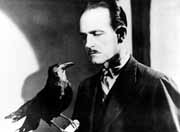
To a generation of cinephiles like Andre Bazin, Alain Resnais and Eric Rohmer, who had grown up in the rich cinematic culture of the 1920’s and 30’s, this lack of choice added to the sense of loss they already felt as a consequence of the war. And it wasn’t just French films they missed, they could also no longer see the American genre films they loved: westerns, comedies and adventure films by directors such as Howard Hawks, Josef von Sternberg, Leo McCarey and Ernst Lubitsch. This experience of loss led them to prize freedom of expression and truth of representation above all else; values which would become central to their later work.
For a younger generation born around 1930, who would later make up most of the directors of the New Wave, the cinema became the centre of their universe and a refuge from the harsh reality of the world outside. They were too young to know very much about the films that had come before the war, and had no reviews or criticism to guide them, but they instinctively cherished a handful of films made during the occupation like Lumiere d’ete (1943) by Jean Gremillon, Les Visiteurs du Soir (1943) by Carne and Prevert, Le Destin Fabuleux de Disiree Clary (1941) by Sacha Guitry, Goupi Mains Rouges (1943) by Jacques Becker, and above all, Le Corbeau (1943) by Henri-Georges Clouzot.
France After The War
In 1944 France was liberated from German Occupation by the Allied forces. In the years that followed the Liberation, cinema become more popular than ever. French films such as Marcel Carne’s Les Enfants du paradise (1945) and Rene Clement’s La Bataille du Rail (1946) were a great success. Italian and British imports were also popular. Most popular of all were the stockpile of films now streaming in from Hollywood.
During the occupation the Nazis had banned the import of American films. As a result, after the war, when the ban was lifted by the 1946 Blum-Byrnes agreement, nearly a decade’s worth of missing films arrived in French cinemas in the space of a single year. It was a time of exciting discoveries for cine-philes eager to catch up with what had been happening in the rest of the world.
Reviews and Journals
Andre Bazin 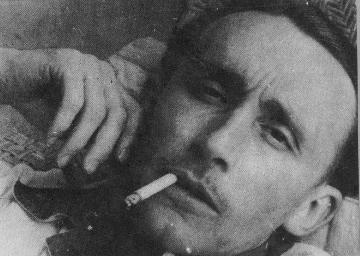
The Liberation brought with it a great desire for self-expression, open communication and understanding. The discussion of film, inevitably, became part of the discourse. Journals, such as L’EcranFrancais, became a platform for writers like Andre Bazin to develop their theories and convey their enthusiasm for film. Bazin saw cinema as an art form, and one that deserved serious analysis. His interest was in the language of film – favouring the discussion of form over content. Such an attitude tended to bring him into conflict with the predominantly left wing writers at the paper, who were more concerned with the political standpoint of a film.
Another writer at the magazine who shared Bazin’s sense of aesthetics was Alexandre Astruc. In 1948 he wrote an article titled “Birth of a New Avant-Garde: The Camera as Pen”, in which he argued for cinema, like literature, to become a more personal form, in which the camera literally became a pen in the hands of a director. The article would become something of a manifesto for the New Wave generation and a first step in the development of “auteur theory”.
Another popular magazine amongst cinephiles was Le Revue du Cinema. This was a publication devoted to the arts and therefore much less concerned with politics and issues of social commitment. American cinema was discussed as much as European cinema and there were in depth studies of directors like D.W. Griffith, John Ford, Fritz Lang and Orson Welles. Andre Bazin contributed some important articles to the magazine on cinema technique, as did the young Eric Rohmer, whose piece, “Cinema, the art of Space” would have a lasting influence on the directors of the New Wave.
Film Clubs
The same enthusiasts who avidly read the film journals now began setting up film clubs, not just in Paris, but all over France. The most famous of these was Henri Langlois’ Cinematheque Française, which first opened its doors in 1948. The cinema, which he co-founded with Georges Franju, was small, consisting of just 50 seats, but the programme of films shown was both comprehensive and eclectic, and it soon became a mecca for serious film enthusiastsHenri Langlois 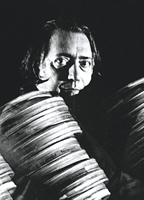
Langlois believed the Cinematheque was a place for learning, not just watching, and he wanted his audience to really understand what they were seeing. It became his practice to screen films on the same evening, that were different in style, genre and country of origin. Sometimes he would show foreign films without translation or silent films without musical accompaniment. This approach, he hoped, would focus the audience attention on the techniques behind what they were watching, and the links connecting films that might otherwise appear very different.
It was here, at the Cinematheque, that many of the important figures of the New Wave first met. Francois Truffaut, only sixteen, was already a veteran film-goer. From a young age, the cinemas of Paris had been his refuge from an unhappy home life. He had even set up his own cine-club, Le Cercle Cinemane, although it only lasted for one session. Jean-Luc Godard was another who immersed himself in the cine-clubs. He was studying ethnology at the Sorbonne when he first started going to the Cinematheque, and, for him too, cinema became something of a refuge. He later wrote that the cinema screen was “the wall we had to scale to escape from our lives.”
Alain Resnais, Jacques Rivette, Claude Chabrol, Roger Vadim, Pierre Kast, and others who would later become directors, received much of their film education at film clubs like the Cinematheque and The Cine-Club du Quartier Latin. For true cine-philes like these, watching films was only part of the experience. They would also collect stills and posters, read and discuss the latest film articles and make lists of favourite directors. It was all a way of putting what they were watching into some kind of perspective and developing their own critical viewpoints.
Another avid member of the cine-club audience was Eric Rohmer. He had already published articles in other film journals, and now, with his two friends Jacques Rivette and Jean-Luc Godard, he set up his own review called La Gazette Du Cinema. Although the paper only had a small circulation, it was a means by which they could express their views on some of the films they were watching. Others likeTruffaut and Resnais soon followed, writing articles for magazines like Arts and Les Amis du Cinema.
Cahiers du Cinema
The most important and popular film journal of all first appeared in 1951. Set up by Jacques Doniol-Valcrozeand Andre Bazin out of the ashes of the La Revue du Cinema, which had closed down the previous year, it was called Les Cahiers du Cinema. The first issues of the review, with its distinctive yellow cover, featured the best critics of the time writing scholarly articles about film. However, it was with the arrival of a younger generation of critics, including Rohmer, Godard, Rivette, Claude Chabrol and Francois Truffaut, that the paper really began to make waves.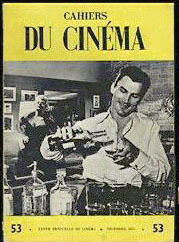
Bazin had become something of a father figure to these young critics. He was especially close to Truffaut, helping to secure his release from the young offenders institute where he was sent as a teenager, and later from the army prison where he was locked up for desertion. At first, Bazin and Doniol-Valcroze allowed the young cine-philes a small amount of column space to air their often combative opinions, but, in time, their articles gained more and more attention and their status rose accordingly.Francois Truffaut
...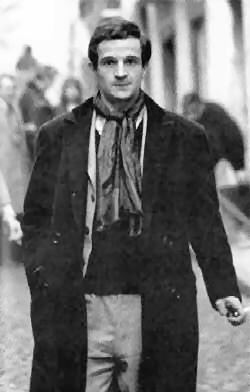
One thing these young writers shared was a disdain for the mainstream "tradition de qualite", which dominated French cinema at the time. In 1953, Truffaut wrote an essay for Cahiers entitled "A Certain Tendency of the French Cinema", in which he virulently denounced this tradition of adapting safe literary works, and filming them in the studio in an old fashioned and unimaginative way. This style of cinema wasn’t visual enough, Truffaut argued, and relied too much on the screenwriter. He and the others labelled it ‘cinema de papa’, and compared it unfavourably with the work of film-makers from elsewhere in the world.
Bazin delayed the article’s release for a year, fearing they would lose readers and anger the film-makers who were being attacked. When it was eventually published it did cause offence but there was also considerable agreement. The passionate and irreverent style of Truffaut’s writing, like that of the other young critics, was a shift away from the hitherto austere tone of Cahiers. It brought the journal both a notoriety and popularity it hadn’t had before. Now he, Rohmer, Godard, Rivette, and Chabrol, were given the opportunity to promote their favourite directors within the review and develop their theories.
Favourite Directors
Henri Langlois always believed that watching silent films was the best way to learn the art of cinema, and he frequently included films from this period in the Cinematheque Français programme. As a result the new wave group had a great respect for directors like D.W. Griffith, Victor Sjostrom, Buster Keaton, Charlie Chaplin, and Erich von Stroheim, who had pioneered the techniques of filmmaking in its early years. When they began making films themselves, silent movies would continue to be a source of inspiration for the New Wave directorsFritz Lang 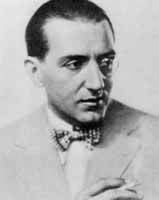
Three German directors, Ernst Lubitsch, Fritz Lang and F.W. Murnau, were held in high esteem by the New Wave. Lubitsch’s sophisticated comedies were held up for their exemplary screenwriting and perfect dramatic construction. Lang, whose later American films were generally felt by most critics at the time to be inferior to his early masterpieces like Metropolis and M, was defended by the Cahiers critics who pointed out that the expressive mise-en-scene of his German films had been interiorized in the intense Film Noir dramas he was now making in Hollywood. These later films such as Clash By Night and The Big Heat, they argued, were every bit as complex as his earlier works. Murnau, the director of masterpieces like Nosferatu and Sunrise, although largely forgotten by contemporary critics, epitomised for the New Wave an artist who used every technique at his disposal to express himself filmically. They sung his praises in the pages of Cahiers, and helped to re-establish his reputation as a cinematic visionary.
Another European influence on the New Wave was the Italian neo-realism movement. Directors like Roberto Rossellini (Rome, Open City) and Vittorio de Sica (The Bicycle Thieves) were going direct to the street for their inspiration, often using unprofessional actors in real locations. They cut the costs of filmmaking by using lighter, hand-held cameras, and post-synching sound. This approach enabled them to avoid studio interference and the demands of producers, resulting in more personal pictures. These lessons learnt from the neo-realists would prove a major factor in the success of the Nouvelle Vague ten years later.Roberto Rossellini 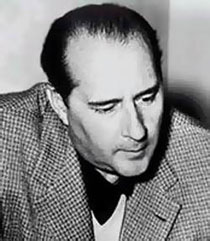
A number of American directors were also acclaimed in the pages of Cahiers du Cinema including not only well known directors like Orson Welles (Citizen Kane), Joseph L. Mankiewicz (The Barefoot Contessa) and Nicholas Ray (Rebel Without a Cause), but also lesser known B movie directors like Samuel Fuller (Shock Corridor) and Jacques Tourneur (Out of the Past). The Cahiers critics broke new ground when they wrote about these directors as they had never been taken so seriously before. They ignored the established hierarchy, focusing instead on the distinctive personal style and emotional truth they saw in these films.
By contrast, contemporary French cinema was a major disappointment to the New Wave group. The year that followed the Liberation of France saw the release of some outstanding films including Marcel Carne’sLes Enfants du Paradise, Robert Bresson’s Les Dames du Bois de Boulogne, and Jacques Becker’sFalbalas. However, since then, complacency had set in. There was none of the frank honesty of Italian neo-realism. Instead, most of the films that dealt with the war and the Resistance seemed to be sentimentalized versions of what had really occured. It was clear that the majority of people, including most French filmmakers, were not yet ready to confront the shame of the Vichy government and the many who had collaborated with the Nazis during the war.Rebel Without A Cause [1955]
...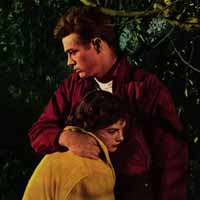
In their articles, the young critics showed their disdain for the "tradition de qualite" prevalent at the time. Even directors who they had once admired like Henri-Georges Clouzot and Marcel Carne seemed now to have lost their ambition; content to play the studio game. Other directors with a more realistic style, such as Julien Duvivier, Henri Decoin and Jacques Sigurd, were equally disappointing; portraying a cynical view of contemporary society that was stylistically static and uninspired. For the New Wave cine-philes, who had expected so much after the war, it felt like a betrayal; and it explains why their attacks in print were often so vitriolic.
However, there were some contemporary directors who made personal films outside the studio system like Jean Cocteau (Orphee), Jacques Tati (Mon Oncle), Robert Bresson (Journal d’un cure de campagne), and Jean-Pierre Melville (Le Silence De La Mer), who were much admired. Melville was a real maverick who worked in his own small studio and played by his own rules. His example would influence all of the New Wave and he is frequently cited as a part of the movement himself. At the same time, the Cahiers critics praised certain French directors of an earlier era like Jean Vigo (L’Atalante), Sacha Guitry (Quadrille), and most of all Jean Renoir (La Regle du Jeu), who was held up as the greatest of French auteurs.
Auteur Theory
For the New Wave critics, the “concept of the auteur” was the key theoretical idea underlying their aesthetic viewpoint. Although Andre Bazin and others had been arguing for some time that a film should reflect the director’s personal vision, it was Truffaut who first coined the phrase “la politique des auteurs” in his article "Une certaine tendance du cinéma français". He maintained that the best directors have a distinctive style, as well as consistent themes running through their films, and it was this individual creative vision that made the director the true author of the film.Alfred Hitchcock
...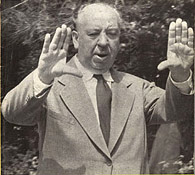
At the time auteur theory was considered a radical new approach to cinema. Before, it had been the screenwriter, or the producer, or the Hollywood studio, who was seen as the principle creator of a picture. The Cahiers critics applied the theory to directors like Alfred Hitchcock and Howard Hawks who had previously been seen as merely excellent craftsmen, but had never been taken seriously as artists. By uncovering the complex depths in the work of directors like these, the young writers broke new ground, not only in the way a film was understood, but in how cinema itself was perceived.Howard Hawks 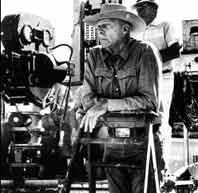
Mainly as a result of this radical new way of looking at cinema, the reputation of Cahiers du Cinémabegan to grow. In Hollywood the review became essential reading and directors like Fritz Lang, Joseph Mankiewicz and Nicholas Ray were photographed with a copy of the magazine in their hands. Filmmakers like these weren’t used to people discussing their work with such accuracy and depth. They were deeply impressed by these young enthusiasts with their strong opinions and perceptive insights into the art of cinema.
Inevitably, as the ideas and writing of the Cahiers critics became better known, there was a backlash. The aggressiveness of the review was felt to be too extreme by some. It brought about a feeling of resentment, and even hatred, in those targetted. As a result a kind of warfare raged between the young radicals and the old guard of French cinema.
Short Films
The young group of writers at Cahiers du Cinéma were not content however, with merely being critics. They wanted to be filmmakers too. At the time there were two recognised routes to becoming a director. You could go through a long apprenticeship as an assistant director until, after many years, you were finally deemed ready to call the shots yourself. This approach was antithetical to the desires of impatient young directors with ideas of their own and a disdain for the conservative material they would have to work on.
The other method was to apply for a short film funding scheme. This government approved scheme ensured all films were made to a professional standard and was equivalent to a number of assistant positions. In the end, it enabled the candidate to obtain the work card needed to make features. Some of the older members of the New Wave began this way by making critically acclaimed documentaries: Georges Franju (Les Sangdes bêtes, Hôtel des Invalides), Alain Resnais (Night and Fog, Toute Le Mémoire du Monde, Le Chant du Styrene), and Chris Marker (Les Satues Meurent Aussi, Dimanche a Pekin, Lettre de Siberie), and Pierre Kast (Les Femmes du Louvre). Others soon followed their example including Louis Malle (Le Monde du Silence), Agnes Varda (La Pointe-Courte), and Jacques Demy (Le Sabotier du Val de Loire).Les Sang des Betes [1949]
...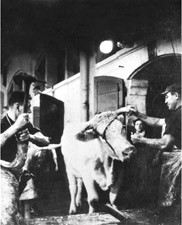
The Cahiers group, however, rejected both of these approaches. They knew they would have to bypass the rules of the system if they wanted to break into the industry and make the kind of films they wanted to make. While still writing for the magazine, they gained experience and contacts. Chabrol worked as a publicist at 20th Century-Fox, Godard worked as a press agent, Truffaut worked as an assistant for Max Ophuls and Roberto Rossellini, and Rivette worked with Jean Renoir and Jacques Becker.
Sooner or later, though, they realised, if they wanted to direct, they would have to start by making short films, raising money anyway they could. Rohmer began in 1950, directing Journal d’un Scélérat, followed by Charlotte et Son Steak. Rivette, working with a script by Chabrol, directedCoup du Berger. In 1952 Godard directed a documentary called Operation Beton about the building of the Grande Dixene dam in Switzerland. He made the film with funds he earned by working as a labourer on the dam. After selling this, he had the means to make two dramatic shorts: Une Femme Coquette and Tous Les Garcons S’Appellent Patrick. As they gained experience, their films became more sophisticated. Rohmer made Bérénice in 1954, La Sonate a Kreuzer in 1956, and Véronique et son Cancre in 1958, to increasingly high standards.Les Mistons [1957]
...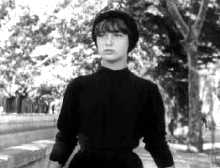
Meanwhile, Truffaut had set up his own film company, Les Films du Carrosse, with the help of his wealthy new father in law, and in the summer of 1957, shot Les Mistons, based on a story by Maurice Pons. Pleased with the success of the film, its financial backer suggested he make another. Truffaut began making a short comedy set against the backdrop of the flooding that had been taking place in and around Paris at the time, but had trouble finding the right tone and handed over the footage he’d shot to Godard. Godard felt no obligation to follow Truffaut’s script however, and created an unconnected story with an off the wall commentary that broke all the conventions followed by traditional filmmaking. This film, Une Histoire d’Eau, was the most original, and most New Wave, of all the short films produced at the time.
Other important shorts made at this time, and in subsequent years, included Le Bel Indifferent (1957) by Jacques Demy, Pourvu Qu’On Ait L’Ivresse (1958) by Jean-Daniel Pollet, and Blue Jeans (1958) by Jacques Rozier. These were followed by by first films from Maurice Pialet (Janine, 1961), Jean-Marie Straub (Machorka-Muff, 1963), and Jean Eustache (Du Cote de Robinson, 1964).
New Developments
When the New Wave directors graduated from making short films to feature films in the late 1950’s, their ability to do so came about largely as the result of a combination of fortunate coincidences. Up until this time, filmmaking had always been an expensive business and it was necessary to have the backing of a major studio. Now, new circumstances came into play that enabled them to bypass this stumbling block.Truffaut and crew on location! 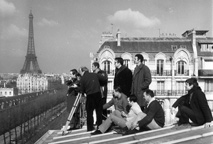
After the war, the Gaullist government had brought in subsidies to support homegrown culture. A further act, 1958’s "Constitution of the Fifth Republic", resulted in more money being available for first time filmmakers than ever before. Private investment money became more readily available and distributors were keen to back new directors.
At the same time, technological developments meant filmmaking equipment was becoming cheaper. New, lightweight, hand-held cameras, developed for use in documentaries, such as the Eclair and Arriflex were now available, as were faster film stocks which required less light, and portable sound and lighting equipment. These advancements meant filmmakers no longer needed a studio to make a film. They could now go out and shoot on location using smaller crews set against authentic backdrops. Working fast on low budgets encouraged experimentation and improvisation and gave the directors more control over their work than they might have had otherwise.
http://www.newwavefilm.com/about/history-of-french-new-wave2.shtml
Subscribe to:
Posts (Atom)
